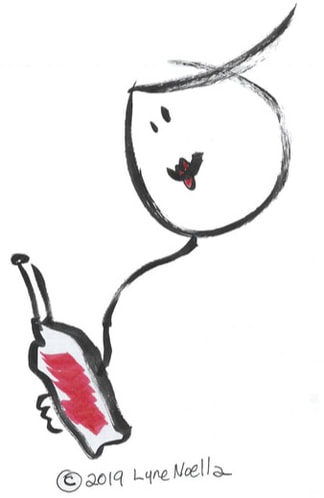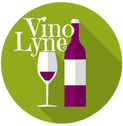 When you look at a bottle of wine, forget about the price. Think of it this way: Are people who went to Harvard University smarter than those who graduated from a state university? Harvard University grads have more opportunities because of their perceived value. In reality, a state university graduate may be just as smart or smarter. Simply having money behind you does not guarantee anyone’s intelligence or success. It is the same with wine: A bottle of wine that sends you to the moon can be financed by a multi-national conglomerate or a small producer whose survival depends on your purchase of the next bottle. You might have read in Wine Spectator magazine that the ratings are done blind and without knowledge of the bottle’s price. This gives each bottle the opportunity to speak for itself and to be evaluated on its own merits. You owe that to people and you owe that to wine. When I reach for a new bottle, I mentally submerge what I know to be the price and instead look for the winemaker’s quality aspiration. Couched another way, What is the intent of the winemaker behind the bottle? Is it a mass-produced wine with pencil-pushing corporate types at the helm? Is it a small, multi-generational producer working in a well-loved vineyard looking to express himself? Is it common plonk offering a ticket to quick inebriation? The bottle itself and the label provide clues but few definitive answers. Most bottles are sized at 750 ml. The shape, weight and the color of the glass represent choices made by the winemaker. Don’t rush to judgment: A bottle that looks like most others can represent either a high-volume producer with economics in mind or a small producer who is buying what’s affordable on the market. A unique bottle, one that is heavier or has a different shape or color is making a quality statement that will be confirmed or debunked as you taste the wine and learn about the producer. Is the bottle presentation an artistic expression of what’s inside or a cunning ploy to attract the purchase of a wine you will ultimately use for cooking rather than drinking? All of these elements communicate the intent and quality aspiration of the producer. But your investigation of a wine and its bottle has just begun. Over time, you will find that certain wine bottle shapes provide a clue to the style of the wine or the region of origin. A bottle’s shape often reflects a region’s history and tradition, especially in the Old World. By that I mean countries that are considered the birthplaces of wine such as Europe and the Middle East. For instance, the Burgundy bottle was invented in the nineteenth century as a vessel for producers to package their Pinot Noir and Chardonnay. It’s probably the shape was the most convenient for the glassmakers at the time. Thereafter, Pinot Noir and Chardonnay producers around the world got in line for the same shape. Even now, producers who make wines with similar characteristics to Pinot Noir, such as Nebbiolo, Etna Rosso and Gamay, also choose this classic bottle. To the southwest of Burgundy in France lies Bordeaux. It’s thought that the Bordeaux bottle, with its high shoulders, was developed soon after the Burgundian bottle by producers who wanted a distinctive shape for their world-class blends. Some historians offer a more practical reason: to capture the sediment of aged Bordeaux blends featuring Cabernet Sauvignon and Merlot. There’s probably some truth to both theories. If you threaten to pull out my fingernails unless I make a choice, I’m going to say that the winemakers of Bordeaux probably wanted to go to the party sporting something unique to their area. Wouldn’t you? You might have noticed that wines such as Riesling and Gewürztraminer from the Mozel region of Germany have a unique tall, thin bottle shape. Distribution of these bottles involved a leisurely ride along the Rhine river, in contrast to the swashbuckling high seas travel of Burgundy and Bordeaux exports. The comparatively easy ride down the Rhine of the German wines meant that it was possible to cram as many bottles as possible in the hull of the ship. Hence a tall, delicate bottle was designed to enable capacity. Now let’s take a closer look at the label on your bottle. Information usually includes the vintage, grapes and/or region, alcohol by volume, the producer, and other facts. Look beyond the words to the presentation. Does the art look like it was done by your next door neighbor or a professional graphic artist? Is the printing muddy or crisp? Incidentally, I perk up when I see a label that looks like it was produced by an amateur. The person producing that iffy label may in fact be a sole-proprietor winemaker tasked with every aspect of getting the wine to market. And what’s inside the bottle may cause you to sweat with excitement. Or wish you had never been born. I was once given a mysterious bottle. On the label was an illustration of a woman. The type of woman who would slash your throat in the middle of the night while howling with laughter. What’s more, the bottle was from Temecula, California. Temecula is known for tasty sparkling wines but it is not a major wine region. I had yet to taste a good still wine from the area. To be fair, I had not tasted many wines from Temecula. I had no idea who gave me the bottle; it was a Secret Santa gift. The giver remains anonymous to this day. I threw the bottle into the wine fridge and there it sat for months. Then one night I was cooking dinner and the unimaginable happened: I had no wine in the house. Except for the scary mystery bottle. I took a deep breath, popped the cork, and hoped that killer woman on the label would not pop out like a genie. I wanted wine so I figured it was worth the risk. I’m telling you the story, so you know I lived through it. By now I trust you enough to admit the following: I make mistakes in wine due to preconceived notions. Everyone does. That’s how I know you will make them too. I had to scold myself (again) for having a mindset that the wine with the scary label would taste like gasoline. Au contraire, I enjoyed it. Nobody got killed either, so the dinner got made and my husband did not have to go hungry. Thanks, Secret Santa. This article is an excerpt from my upcoming book on how to get to know and fall in love with a bottle of wine. Stay tuned for updates on the book, which will be published this fall. -- Lyne Noella
0 Comments
|
AuthorLyne Noella Archives
October 2022
Categories
All
|


 RSS Feed
RSS Feed
